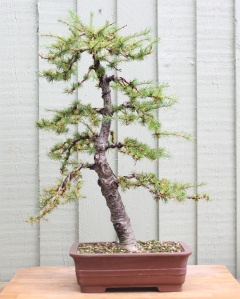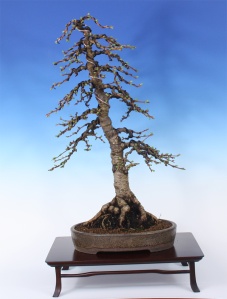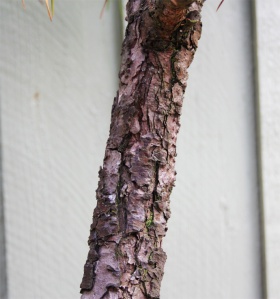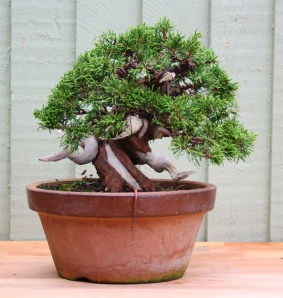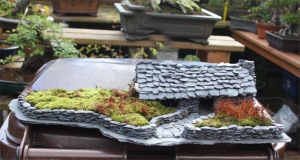I decided at the start of this year that I would reduce the amount of fertiliser that I would give to these 2 trees in an effort to slow down the rate of growth, shorten the internode length and keep the needle size quite small. They have been given a single monthly doze of an inorganic balanced fertiliser throughout the season. I think I have achieved the result I was looking for.
The first tree was collected in 2012. A good basic branch structure was developed over 2012 – 2013 growing seasons. This is how it looked at the start of 2014.
And this is how it is looking today. A reasonable number of new branchlets have developed, particularly in the apex. This new growth will be wired in over the winter.
The second tree is one of my first bonsai trees. Its been in my possession for about 14 years. It already has a good branch structure and only needs minor development to improve it. The next picture shows how it looked at the start of the season.
This is how it looks today
An advantage of the reduced feeding regime, is that I have been able to keep the wire that was applied last winter in position for the entire year without cutting into the bark. In previous years I have noted that wire applied in the summer and taken off in the winter is more effective at keeping a branch in position than wire applied in the winter and taken off in the summer. My hope is that I will see a marked improvement in the branch placement, when the wire is removed this winter. We shall see.


